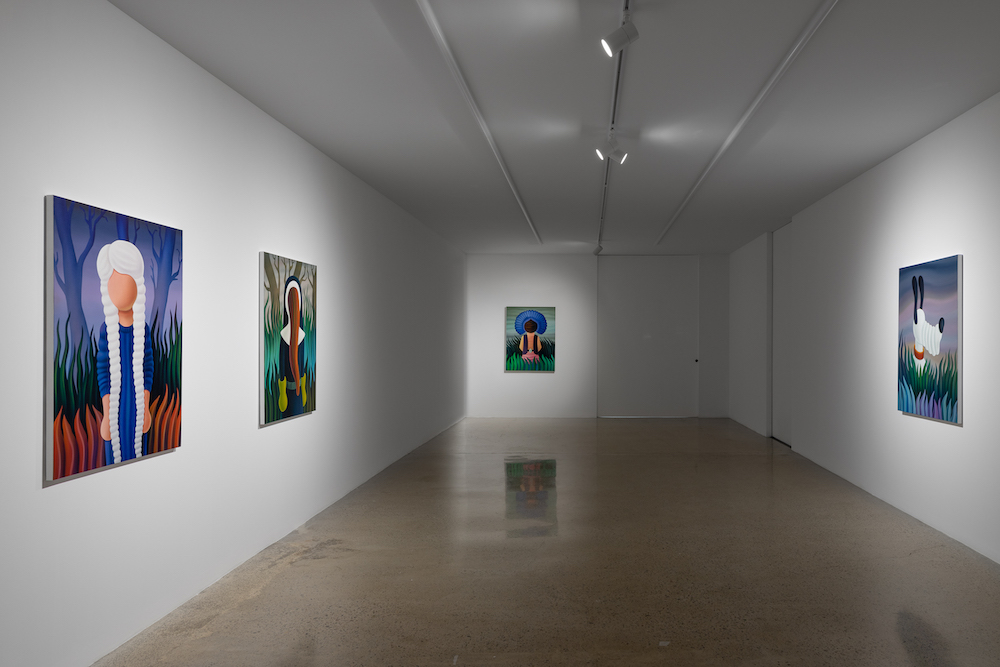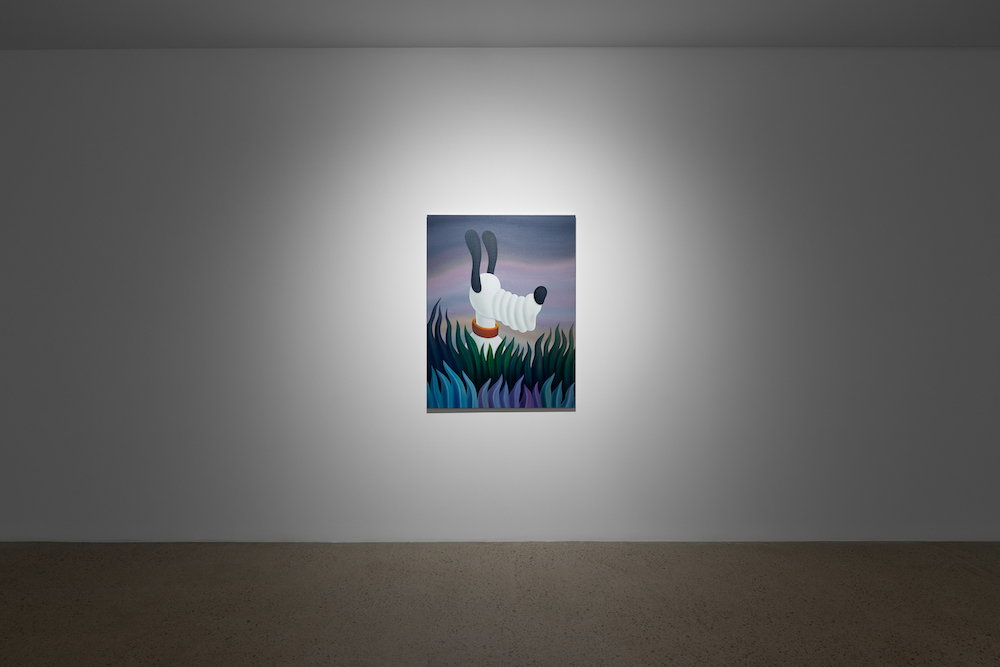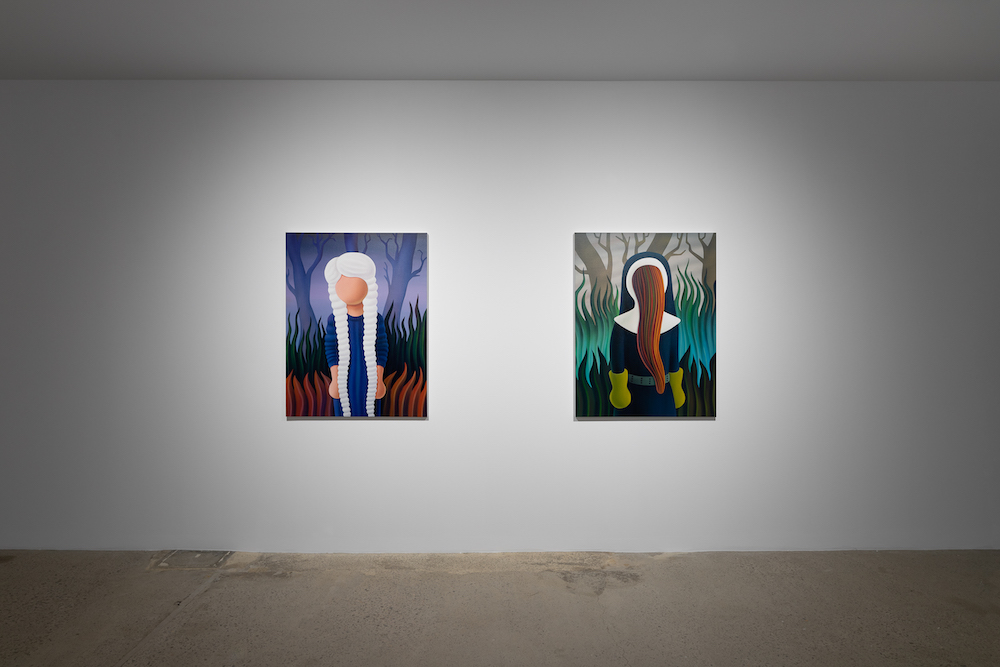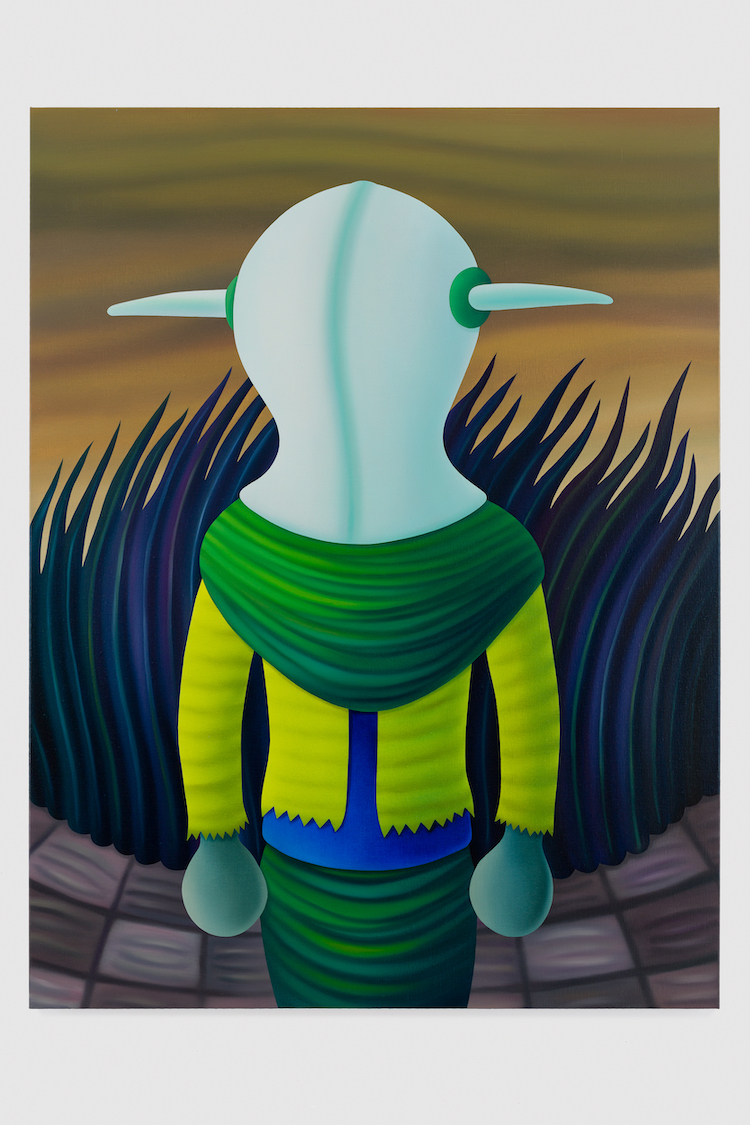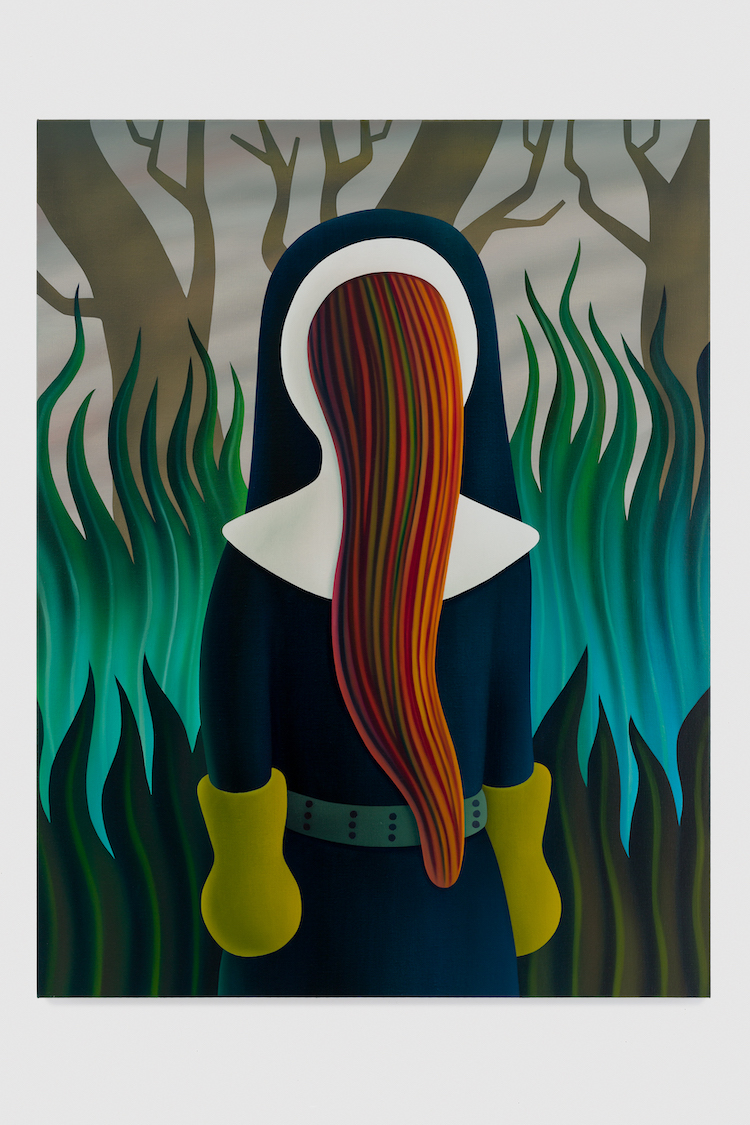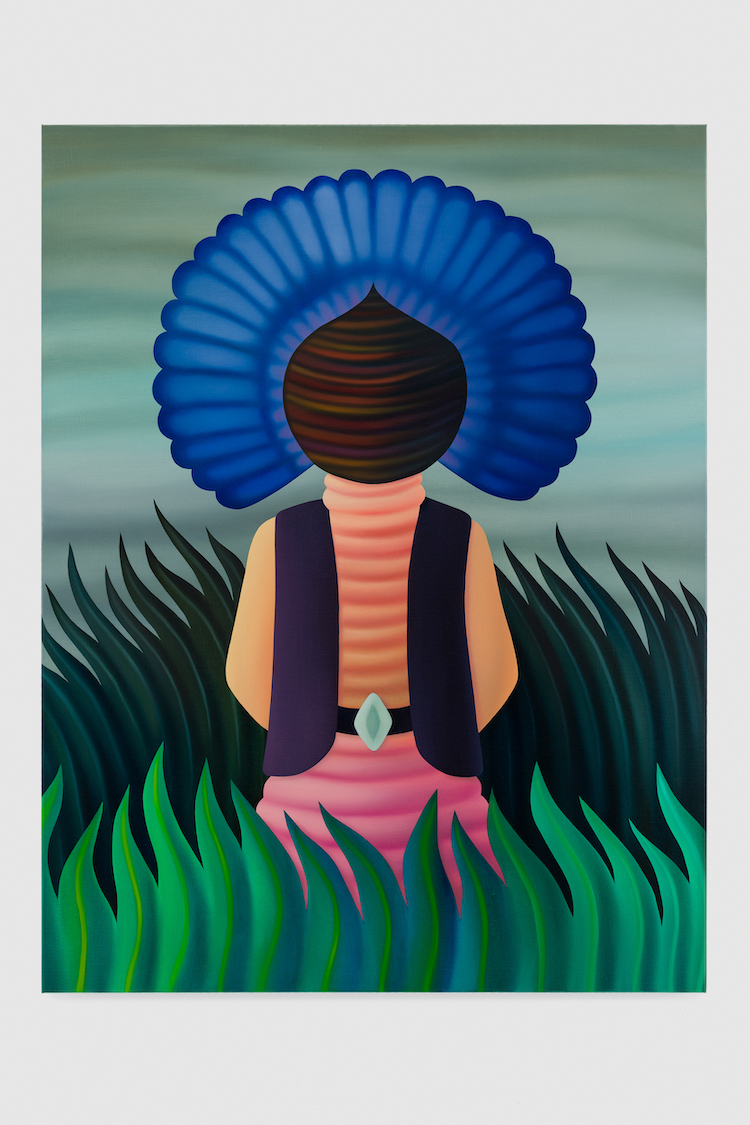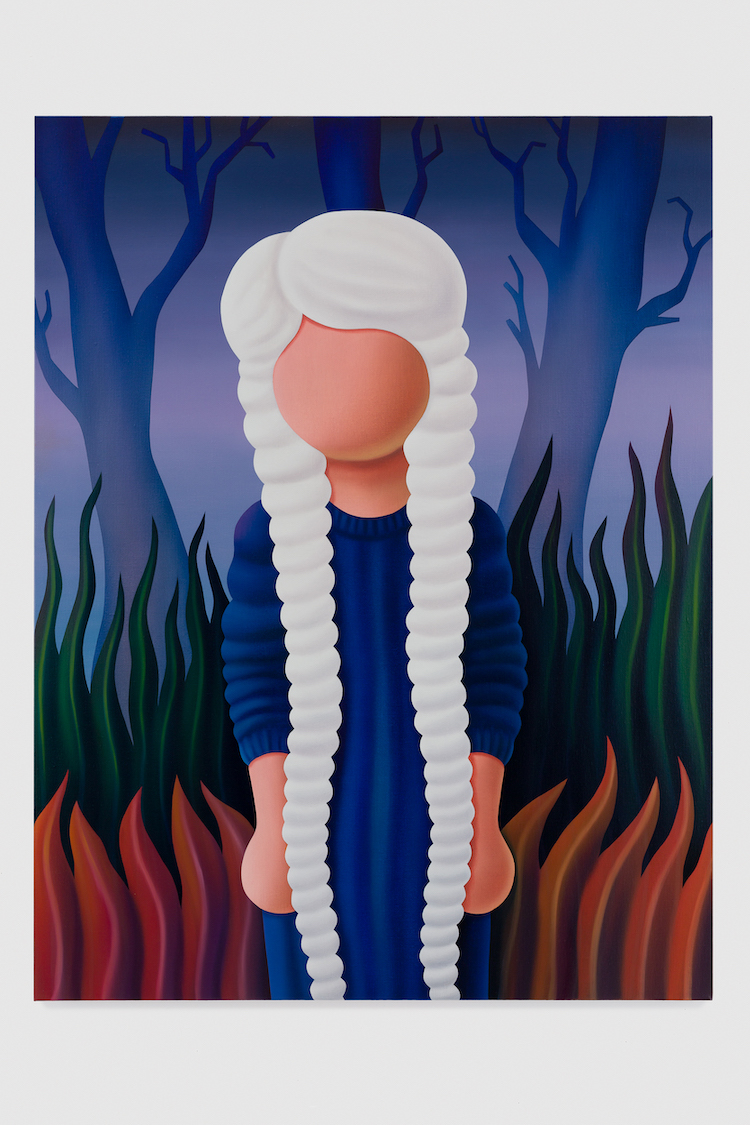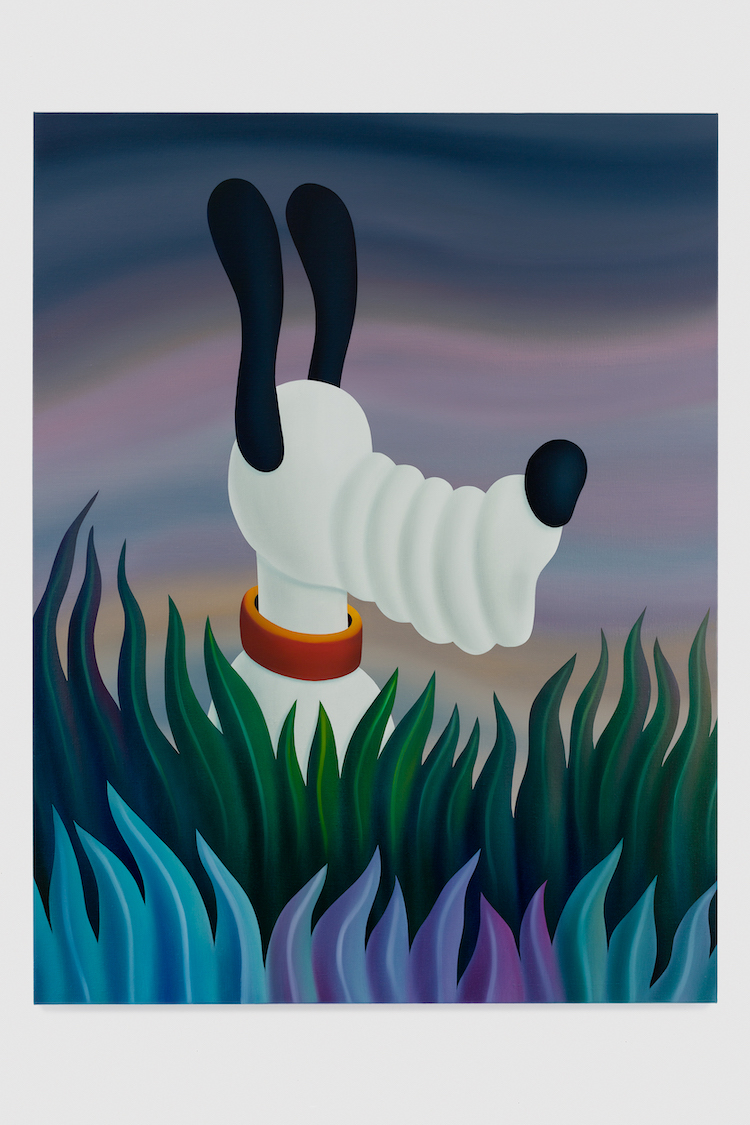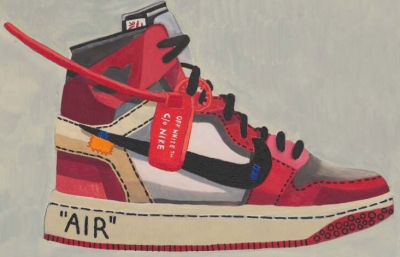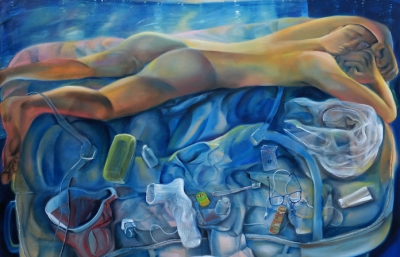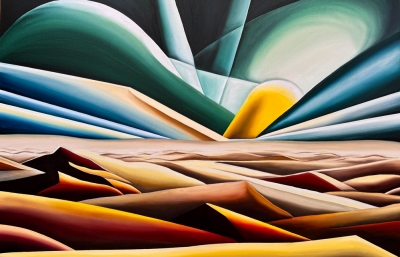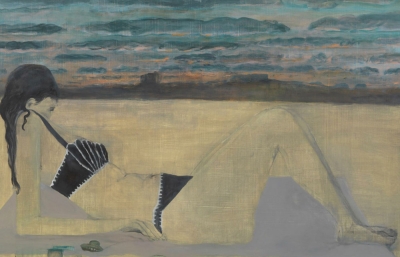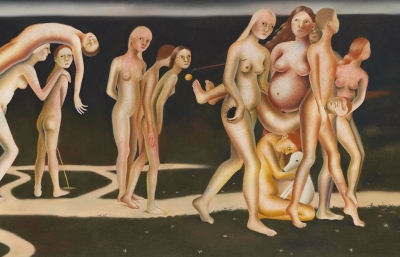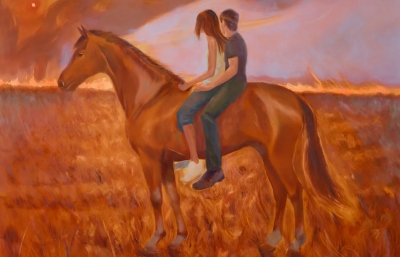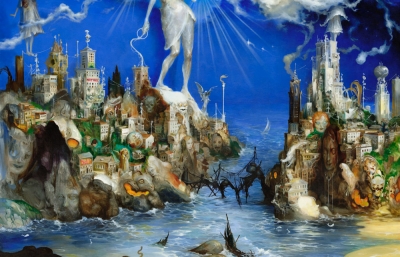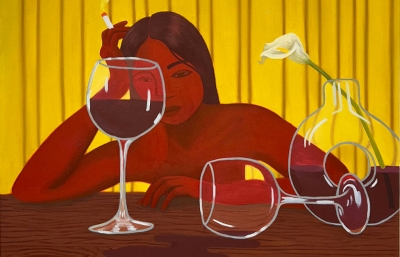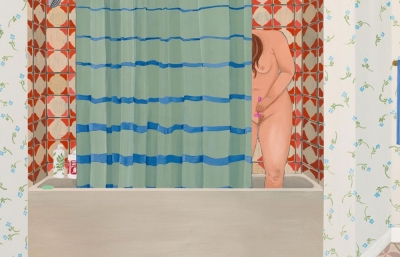Alvar Aalto, one of the most important architects of the 20th century, said: “Form must have a content, and that content must be linked with nature.” The paintings of Barcelona-born Jordi Ribes seem to follow these instructions to the letter.
Form: Ribes makes his sketches digitally and then translates them onto canvas using oil paints. His paintings follow a traditional technique but have a completely contemporary finish. His recognizable vertical or horizontal brush strokes provide a slightly blurred effect, while the almost fluorescent colors are reminiscent of the digital field.
Content: The artist chooses objects, beings and subjects that allow him to enhance this particular pictorial technique. Trunks, grass, hair, curtains, tunics lend themselves to this game of light and shadow that conveys a certain intrigue. The figures do not have faces or fingers, but they transmit humanity through the position of their bodies or their surroundings.
Nature: the characters are usually in jungles, forests, rivers, often accompanied by some puzzling object. It is as if the atmosphere of Twin Peaks had been transferred to a natural environment. There is something dark and at the same time attractive in these scenes, which are a space for games, mystery, and imagination. From time to time we find interior scenes, where the curtains allow the room to become enigmatic.
Focusing on this new exhibition, we find other influences. “Hallogallo” is particularly connected to music. The name of the exhibition is the title of a song by German rock band Neu!, published in 1972, the year Ribes was born, and the titles of all the exhibited works are inspired by songs from the 60s and 70s that represent a return to the first bands the artist listened to. The idea is to create a connection with another sense, the sense of hearing, and to link two apparently disparate worlds. In this way, and without leaving the realm of the imagination, we can let familiar songs resonate in our minds.
Beyond all these references, one of the main influences of Ribes’s paintings is found in the movies. When we look at his paintings, we can easily imagine more complete scenes where these characters live transformative experiences. Through decontextualized pieces and figures as well as hidden objects or landscapes, the artist challenges us to see beyond the painting, beyond the limit, and discover where our intuition takes us.
The works exhibited here, which are smaller than usual, trigger a range of sensations to the viewer depending on their mindset. “Never turn your back on mother earth” may seem mysterious, but it can also make us feel uncomfortable, while “Master of reality” can both make us smile and feel intrigued. This is a space to let yourself be carried away while observing Ribes’ fascinating characters, which, in a way, are observing us too.



